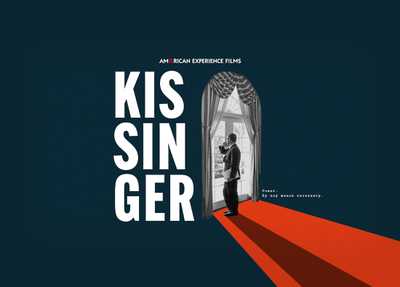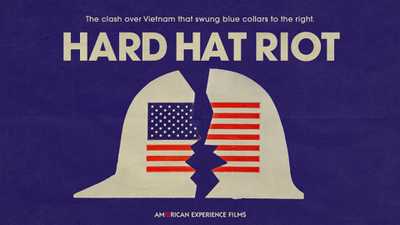5 Times U.S. Presidential Commissions Rocked the Country
What do a long list of iconic and controversial historical events have in common? They all got the presidential commission treatment.

A presidential assassination. Widespread racial protest. Pearl Harbor. The high-profile explosion of a space shuttle. Highly disparate topics, but in each case, a U.S. president was moved—whether by public pressure or their own conscience—to call for a special panel investigating the causes and treatments of a pressing issue.
Presidential commissions are tasked, often under heightened political and time constraints, with explaining complex societal dynamics and events. Sometimes those analyses are heeded; other times, as with President Lyndon B. Johnson’s Kerner Commission, deliberately ignored. And yet in each instance, the formation of a task force appointed to directly advise the president sends an unmistakable public message as to a problem’s significance. Here are five of the 20th century’s most iconic presidential commissions.

Warren Commission
One week after President John F. Kennedy was shot to death in Dallas, Texas, his successor Lyndon Johnson appointed a commission to investigate both Kennedy’s murder and the killing of Lee Harvey Oswald, the president’s alleged assassin. Led by Supreme Court Chief Justice Earl Warren, the commission received testimony from 550 witnesses and 3,100 reports from the FBI and Secret Service.
Nearly 10 months after the task force was formed, the commission submitted its 888-page report to President Johnson, which was subsequently made public along with 26 volumes of supporting documents. The report’s central finding—that Oswald acted alone in Kennedy’s killing, absent any national or international conspiracy—has been the focus of intense speculation and criticism in the years since its release. “As long as a mystery resides at the center of this case, it can't be closed,” investigator Josiah Thompson told American Experience. “There's this fundamental question mark that still stands there in the center of our experience in the 20th century.”

Kerner Commission
The second bombshell commission of Johnson’s presidency, the National Advisory Commission on Civil Disorders—known colloquially as the Kerner or Riot Commission—was established in July 1967 following several years of urban civil uprisings across the United States. Johnson asked his task force to address three questions: “What happened? Why did it happen? What can be done to prevent it from happening again and again?”
Johnson appointed the Democratic governor of Illinois Otto Kerner as the bipartisan commission’s chair, and its field teams undertook a rigorous, on-the-ground investigation in 23 cities to try to understand the root causes of unrest that led to violence, arson and looting. The conclusion the commission members came to was shocking for its time. “White society is deeply implicated in the ghetto,” their 1968 report plainly stated. “White institutions created it, white institutions maintain it, and white society condones it.” President Johnson was so dismayed that he refused to publicly acknowledge the final report, which nonetheless went on to become a national bestseller.
“The commissioners did not deign to take the easy way out,” said New Yorker journalist Jelani Cobb. “They had the vantage point of having actually seen the conditions with their own eyes, having gone to places and talked to people and come as close as they could to experiencing life in these ghettos. They told the nation what exactly the problem was, even if it meant that no one was going to listen to them.”

Roberts Commission
After the shocking Japanese attack on Pearl Harbor on December 7, 1941, President Franklin D. Roosevelt called for an investigative task force to determine if negligence or dereliction of duty on the part of military and government officials had enabled the attack. Chaired by Supreme Court Justice Owen J. Roberts, the commission was made up entirely of active or retired military officials. The investigation began in Washington, D.C. and proceeded to Honolulu, interviewing 127 witnesses. Less than two months after the surprise bombing—an extremely fast turnaround for such a significant event—the commission released its findings.
Roosevelt’s task force assigned blame chiefly to Admiral Husband E. Kimmel and Lieutenant General Walter C. Short, the U.S. military’s top army and navy commanders in the Pacific, both of whom were demoted, while exonerating several prominent political figures. The commission’s final report never specifically mentioned Japanese Americans, but a passage about “Japanese spies” received widespread media coverage, and played a critical part in turning mainstream American public opinion in favor of incarcerating U.S. citizens of Japanese descent. California’s governor confirmed the connection, saying of many of his constituents at the time, "Since the publication of the Roberts Report, they feel they are living in the midst of enemies. They don't trust the Japanese, none of them.’”

Rogers Commission
On January 28, 1986, the space shuttle Challenger exploded 73 seconds after its launch in Cape Canaveral, Florida, a disaster broadcast on live television. NASA immediately halted the shuttle program, and President Ronald Reagan appointed a fact-finding commission chaired by former Attorney General and Secretary of State William Rogers to determine the disaster’s cause. Prominent public figures were named commission members, including astronauts Neil Armstrong and Sally Ride, pilot Chuck Yeager and physicist Richard Feynman.
Extensive commission hearings revealed both mechanical and process failures leading to the explosion. Icy conditions on the day of the shuttle’s launch compromised rubber “O ring” seals on one of the shuttle’s rocket boosters during the extreme conditions of takeoff; during one commission session Feynman spectacularly demonstrated the seal failure by plunging an O ring into a glass of ice water. Following testimony that revealed space agency managers were aware of technical problems for years prior to the Challenger mishap, the commission also faulted NASA for poor engineering and management. The explosion, read the commission’s final report, was “an accident rooted in history.”

Watkins Commission
In June 1987, Reagan called for the formation of another fact-finding mission, this one significantly more politically charged than the Challenger’s. The purpose of the Presidential Commission on the Human Immunodeficiency Virus Epidemic, Reagan said, was to make HIV go “the way of smallpox and polio.” Among the commission members were both Cardinal John O’Connor and gay medical researcher Frank Lilly; the latter’s appointment drew strong criticism from conservative quarters.
Almost immediately the task force ran into strong ideological and personal differences, leading its chair, vice chair, and only medical staff officer to quit three months in. In a surprise development, however, Reagan promoted an unlikely commission member to be the group’s new chairman. Admiral James D. Watkins, who had served as the U.S. Navy’s top ranking officer and a nuclear strategist, took over amid uncertainty about the panel’s effectiveness. Under his leadership, the commission strongly advised passage of anti-discrimination legislation for HIV patients, more equitable and affordable care, preventative treatment of IV drug use, and a loan program to encourage nurses to serve in communities highly impacted by the virus, among other recommendations. The commission’s final report ultimately called for a $20 billion, 10-year effort to combat the public health crisis. “It’s only seven-tenths of a percent of the defense budget,” Watkins reasoned.

American presidents hold the most powerful office on earth and occupy a unique place at the center of national and world events. At once chief executive, head of state, commander-in-chief, and leader of a political party, the President of the United States is also a prominent cultural figure, and a bellwether of the society he governs.
In this award-winning collection, explore documentaries, biographies, interviews, articles, image galleries and more for an in-depth look at the history of the American presidency.






